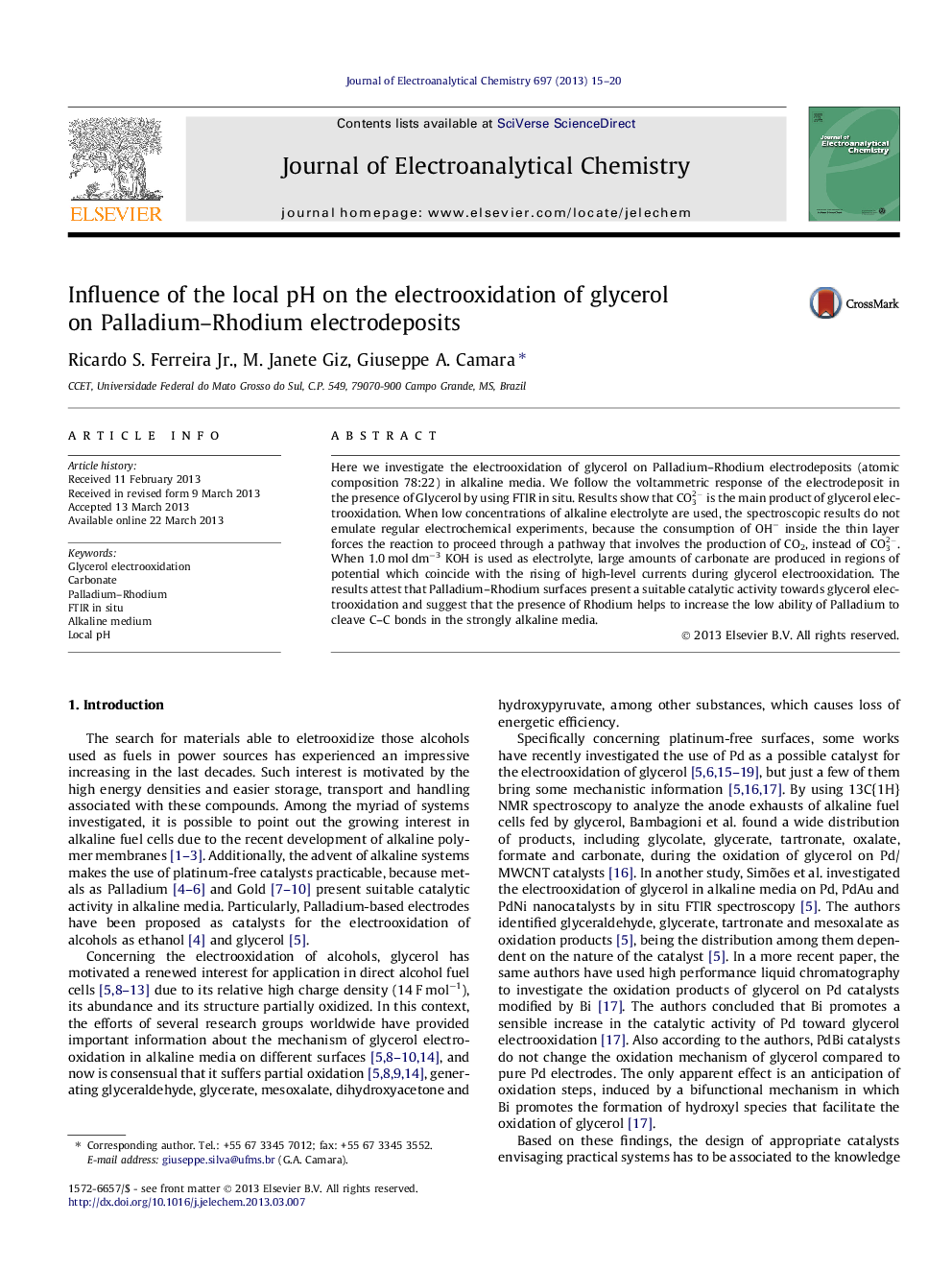| Article ID | Journal | Published Year | Pages | File Type |
|---|---|---|---|---|
| 6663051 | Journal of Electroanalytical Chemistry | 2013 | 6 Pages |
Abstract
Here we investigate the electrooxidation of glycerol on Palladium-Rhodium electrodeposits (atomic composition 78:22) in alkaline media. We follow the voltammetric response of the electrodeposit in the presence of Glycerol by using FTIR in situ. Results show that CO32- is the main product of glycerol electrooxidation. When low concentrations of alkaline electrolyte are used, the spectroscopic results do not emulate regular electrochemical experiments, because the consumption of OHâ inside the thin layer forces the reaction to proceed through a pathway that involves the production of CO2, instead of CO32-. When 1.0 mol dmâ3 KOH is used as electrolyte, large amounts of carbonate are produced in regions of potential which coincide with the rising of high-level currents during glycerol electrooxidation. The results attest that Palladium-Rhodium surfaces present a suitable catalytic activity towards glycerol electrooxidation and suggest that the presence of Rhodium helps to increase the low ability of Palladium to cleave C-C bonds in the strongly alkaline media.
Related Topics
Physical Sciences and Engineering
Chemical Engineering
Chemical Engineering (General)
Authors
Ricardo S. Ferreira Jr., M. Janete Giz, Giuseppe A. Camara,
